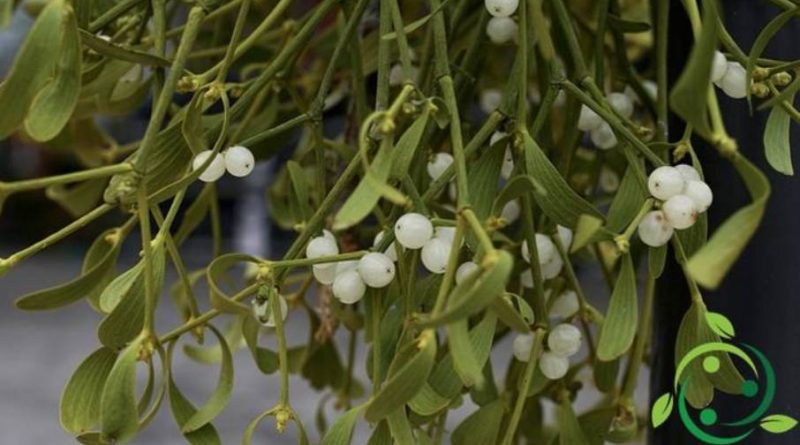How to grow Mistletoe
How to grow Mistletoe
Mistletoe (Viscum album L., 1753) is a bushy plant of the Viscaceae family, an epiphytic evergreen, a hemiparasite of numerous trees, especially broad-leaved trees such as poplars, oaks, limes, apple trees, but also conifers: Scots pine and mountain pine and fir trees. Mistletoe is therefore an epiphytic plant that requires a host to supply nitrogen.
Its presence is noted above all in winter, when its bushes planted in the trunks and on the branches are highlighted by the loss of the leaves of the plant that hosts them.
The mistletoe is recognized by the presence of oblong and leathery leaves about 2 cm wide placed two by two along the branch, with yellow flowers and fruits with white or yellowish translucent spherical berries and with a gelatinous and sticky interior.
In this card we will see how to cultivate the Mistletoe following the most appropriate agronomic indications.
The mistletoe cultivation that is practiced for ornamental purposes takes place in the spring period by cutting off parts of the branch from a host plant (oak, elms, poplars, limes and walnuts) and engages them, crushing a ripe mistletoe berry.
In nature the propagation of mistletoe is carried out by transporting the berries by birds, such as the tordela or turdus viscivorus, which let them fall on the trees.
Once this particular type of graft is practiced, after a couple of years the mistletoe will start to grow spontaneously.
The green leaves of the mistletoe are able to complete the process of photosynthesis but, as mentioned, not to obtain nitrogen.
Remember that the fruit of the mistletoe, or a whitish and rubbery berry, is toxic to humans. The toxicity of the mistletoe does not lie only in the berries, but to a lesser extent also leaves and in the stems.
Mistletoe has an ancient ornamental tradition linked to the Christmas period for its good wishes.
In fact the twigs of mistletoe bearing oblong and leathery leaves of green color and spherical berries of gelatinous consistency hang on the doors of the house to wish serenity and peace to those who live there.
In ancient times the mistletoe berries were boiled to create a glue that spread on the branches of the trees could capture birds and mice.
Recall that, in addition to the ornamental uses, the leaves of the mistletoe are used in phytotherapy, in the form of tinctures or infusions for the treatment of hypertension, arteriosclerosis and cerebral embolism.
In general, mistletoe is used in traditional medicine, in the form of tinctures or infusions, as an antihypertensive and antiarteriosclerotic. There are currently no clinical studies confirming this action if the mistletoe is taken by mouth. The herbaceous parts, on the other hand, contain substances that appear to possess immunostimulatory and antitumor activity if injected parenterally. Because of its healing properties, mistletoe was used since the peoples of Norse mythology.

